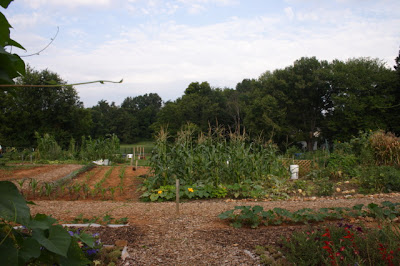This rose dates to the first half of the nineteenth century; it has had a small but loyal following ever since. But those flowers: at first glance they look like a slightly doubled Rosa multiflora. If your rose sensibilities are shaped by exposure only to modern roses, you might wonder why someone would grow such a rose. One has to catch it at just the right moment to understand why it has been cherished for so long. That moment comes when the flowers, flowers in their thousands, just begin to open. For a few hours those flowers seem to glow: the otherwise cold white is suffused with the faintest flush of warm color. Is that color pink or chamois or something else? I don't know; it is fleeting, but as long as it is there these flowers have a warm, soft, lambent quality which is distinctly and very agreeably feminine. And as the color casts its spell one is enveloped in the sweet musky fragrance.
Ordinarily I try to keep the postings to this blog timely; this one is nearly three months late. But when I saw the picture earlier today while reviewing old files, I was so strongly reminded of the day I stood before this plant and surrendered myself to its charms that I wanted to share that moment.
Ordinarily I try to keep the postings to this blog timely; this one is nearly three months late. But when I saw the picture earlier today while reviewing old files, I was so strongly reminded of the day I stood before this plant and surrendered myself to its charms that I wanted to share that moment.















